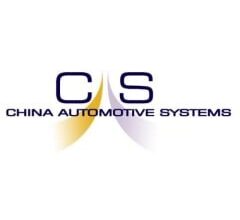
After Bugatti Rimac and Divergent’s own car brand Czinger, McLaren Automotive Ltd has become the latest hypercar brand to adopt DAPS technology and additively manufactured parts. The UK automaker signed a multi-year collaboration with California-based industrial digital manufacturing company Divergent Technologies, Inc. The collaboration will further develop the usage of additive manufacturing to enhance vehicle performance, sustainability, and production efficiency.
“We’re excited to work with Divergent who, like McLaren, have demonstrated a commitment to manufacturing and engineering innovation. This technology will help us to further reduce weight in our complex structures, which will ultimately benefit the driving experience of our customers and support McLaren’s mission to push the boundaries of performance,” said Michael Leiters, CEO of McLaren Automotive.
“Our collaboration speaks to McLaren’s commitment to adopting the highest performance technology to push the envelope on customer experience. DAPS offers automotive manufacturers the means to harness computing power to deliver fully optimized, digitally manufactured structures with unparalleled design freedom,” commented Kevin Czinger, CEO of Divergent.
Bugatti Rimac recently presented the new Tourbillon redefining the hypercar concept completely with an entirely new powertrain and platform. The hypercar also features DAPS additive manufacturing technology from Divergent for the chassis and suspensions.
Czinger, Divergent’s own supercar brand, is set to begin deliveries for the 21C and 21C V Max this summer, with only 80 cars to be produced in total. The 21C is the “world’s first human‑AI‑designed and 3D printed vehicle”, set to mark automotive manufacturing’s shift from analog to digital to bring the industry into the future.
The 21C V Max is the newest body variant of the hypercar, engineered for the ultimate combined acceleration and top speed; the extended and aerodynamic‑driven tail profile sets it apart from its high downforce counterpart.
At its home base in California, Czinger recently opened a cutting‑edge manufacturing facility, Area 21, as it heads into full‑scale production of the 21C.
Interestingly, Czinger became a McLaren Applied customer in 2022 when it acquired the the next-generation IPG5 800V silicon carbide inverter its 21C hypercar. The IPG5 benefits from an excellent power density, efficiency and motor control, and when working alongside the 21C’s internal combustion engine (the world’s most power-dense production ICE) and an 800V electric drive, the three IPG5 units in each vehicle enable a peak power output of 1,250hp (932kW).
By drawing on its complex skill set, McLaren Applied enabled Czinger and the 21C to achieve its power density requirements by packaging the IPG5 into a 3.79-liter box which weighs 5.5kg.
“We believe in performance and path breaking technology; as such, we are proud to select McLaren Applied as our preferred inverter supplier. Including their high-efficiency inverter in the 21C will optimize the horsepower of our in-house designed powertrain, enhancing the driver experience,” said at the time Lukas Czinger, co-founder of Czinger Vehicles.
Read More



